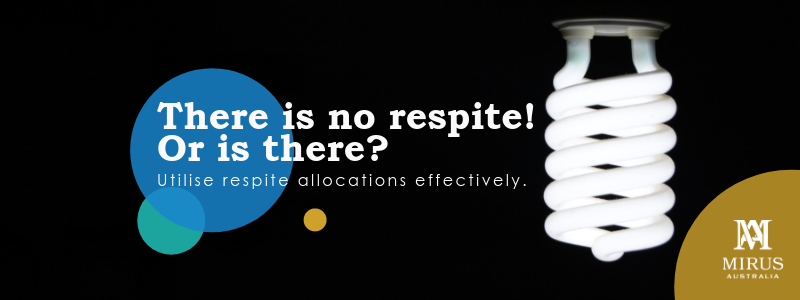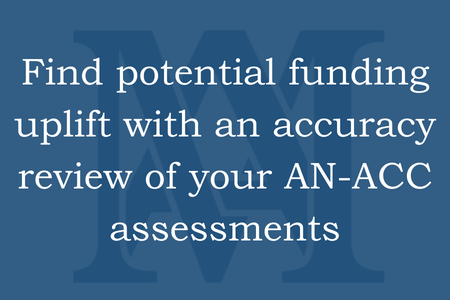There is no respite! Or is there?
April 17, 2019 | Mirus Metrics

How to utilise respite allocations more effectively.
As the availability of residential respite care is controlled at both the supply (provider allocation) and demand (consumer entitlement) level, it’s important for the Department of Health to align the supply and demand of residential respite bed days.
For a more accurate assessment of supply and demand the Department of Health encourages providers to use seventy percent or more of their annual allocation by offering a 20% higher high-care respite subsidy to facilities that achieve the utilisation target. (Download our sample Mirus Medicare report to investigate potential missed funding)
Many providers have an allocation that is significantly higher than they actually need, which can make it impossible to achieve the incentive. In our experience, some providers retain excessive allocation out of fear that if they reduce their allocation and somehow use a lot more respite days, they could run out of bed days and face having unfunded respite residents. However, most providers allocation is too high because it is not monitored or measured. There is also a concern (real or imagined) that adjusting respite allocation is frowned upon by the Department of Health and therefore should be avoided.
Only about a third of all Residential Aged Care (RAC) facilities receive the respite incentive, which is up approximately 10% from just two years ago. If the incentive were applied to all high care respite bed days from the past year that weren’t already attracting the incentive the net benefit to the industry would be an additional $14 million. Perhaps this is a relatively small value, but the task of reviewing historical usage, assessing demand in the local catchment then submitting an adjustment application is not that daunting.
Most RAC providers currently don’t receive the incentive and some facilities have more to gain than others. There are many facilities that use a significant amount of respite care days but have extraordinarily large allocations that prevent them from achieving the incentive. For example, a facility that is currently using 2,100 respite days annually would receive an additional $80k in funding. Some facilities use little to no respite care days at all therefore the benefit is little to nothing. Understanding the potential benefit is as easy as multiplying the number of high-care respite days by $38.
The expenses to manage include time to audit historical usage, assess if that correlates to the current demand then adjust allocation using a simple application. Then once a month, review usage against allocation to ensure the target is reached and that there is no risk of running short of allocation. Additional adjustments can be made as needed, which is permitted by the department.
Over the past 2 years, the data analysts’ team at Mirus Australia have helped 75 facilities analyse their usage and forecast allocations that have allowed them to achieve the respite incentive without running out of bed days before the end of the year. Those facilities have been paid an additional $4 million (annually) as a result of those slight adjustments.
We believe that ‘what gets measured gets managed’. The solution is simple. By measuring and monitoring usage against allocation you can achieve the incentive payments.
The threshold for receiving the incentive is calculated by averaging the respite utilisation for the previous 12 months. It is similar to occupancy in that you take the number of respite days used divided by the days available (the total allocation). So, there are two variables that can affect the average utilisation, usage and allocation. You can increase usage and reduce allocation to rapidly increase utilisation.
Now, increasing usage may not be that easy, for a variety of reasons, however, you can have an equally significant impact by reducing allocation. Furthermore, you can drastically reduce allocation (below what is needed for the year) then incrementally re-add bed days as needed. This is the absolute fastest way to increase average utilisation to ensure you above the 70% threshold.
Reporting to assist you
Download a sample Mirus Medicare report here to learn how you can thrive by visualising the right data.
You can also request a detailed report that will assist you in auditing historical usage site by site and based on that usage we can give you the ideal allocation for achieving the incentive.


